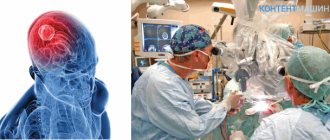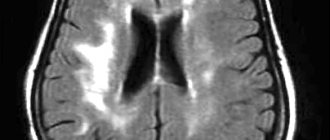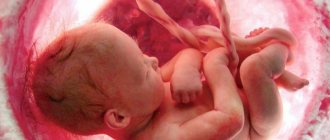1.What are extrapyramidal disorders?
Extrapyramidal disorders
represent disturbances in muscle tone, which affects motor activity.
Movements can be obsessive, uncontrollable, or, conversely, impossible (although previously they did not present any difficulties). The severity of these disorders varies from small tics and paresis to constant trembling or obsessive voluntary contraction of a muscle group.
A must read! Help with treatment and hospitalization!
ES structure
It consists of separate areas that are found deep in the cerebral cortex. Since this structure is considered one of the oldest, it is characterized by the formation of a nucleus. Detailed study of ES began in the second half of the 19th century. Then scientists found that the core consists of three components:
- the striatum (stiatrum), which is divided into two separate sections: the caudate and the lenticular. The latter consists of a pale layer and a shell;
- the fence that lies between the layers of gray matter. There is little information about it, the functions have not been fully studied by scientists;
- the amygdala region, which is directly connected to the subcortical olfactory system and the limbometric system;
- red nuclei, which are of a paired nature. It is from this area that unconscious impulses originate and are directed to the muscular muscles of the skeleton. There is a concept of Trout cross, thanks to which all processes are launched from both sides. The red tint is due to the presence of blood capillaries and a high ferrum content;
- the cerebellum does not belong to the extrapyramidal system, but it is fully involved in all unconscious processes of the human body;
- black content, which is characterized by pairing. It got its name due to the high content of melanin pigment. Anatomical location - between the peduncle and the tegmentum of the brain. Supplied with a large number of blood vessels, it is directly connected to parts of the brain.
2. Causes of the disease
The cause of these disorders is associated with damage to the extrapyramidal system of the brain and neurotransmitter imbalance. The extrapyramidal part of the brain ensures control of posture, smoothness of movements, and their compliance with the intended action. Accuracy, speed and coordination of different muscle groups are also controlled by this system.
Quite often, extrapyramidal disorders occur as a side effect of taking antipsychotic drugs.
. Drug-induced extrapyramidal disorders can also be observed when taking antidepressants, calcium antagonists, antiarrhythmic drugs and drugs prescribed for Parkinson's disease. Side effects of these drugs can occur in the first days of treatment or as a consequence of prolonged regular use (respectively, “early” and “late” drug disorders). Late extrapyramidal disorders can develop even after discontinuation of the drug and be irreversible. This risk must be taken into account when including these drugs in a therapeutic regimen.
Extrapyramidal disorders significantly reduce the quality of life of patients, severely limiting social activity. The psychological status is characterized by anxiety, feelings of inferiority, cognitive impairment, isolation, loss of interest in the outside world and serious feelings of loneliness.
Visit our Neurology page
Functions
The main function of the extrapyramidal system is the formation and regulation of reflex motor acts. The system’s tasks include overcoming inertia (the ability of the body to remain in a state of rest and movement without the influence of external factors), coordinating voluntary and uncontrolled actions, and regulating spontaneous facial expressions. Other features:
- Maintaining the ability to assume a posture that is optimal for the intended action.
- Ensuring an optimal balance of tone of the flexor and extensor muscles.
- Ensuring smooth movements.
- Maintaining proportionality (strength, direction, speed) of movements.
The physiology of the extrapyramidal system, as part of its interaction with other brain structures, suggests an influence on the functioning of internal organs. Damage to the structural elements of the system leads to motor asymmetry, the occurrence of violent, uncontrolled movements - excessive or limited due to muscle spasms.
3.Types of extrapyramidal disorders
Ametosis
This type of disorder most often manifests itself in the hands and facial muscles. Characterized by slow wriggling movements of the fingers, which look worm-like and devoid of bones. Twitching of the lips and tongue, curvature and asymmetry may be observed on the face. The facial muscles alternately tense and relax. Such disorders can be the result of birth trauma, encephalitis, syphilis and traumatic brain injuries.
Chorea
This type of disorder is manifested by erratic, irregular movements of the entire body. At the same time, the muscles of the trunk and limbs are characterized by a decrease in tone.
Torsion spasm
A combination of dystonia of the trunk muscles with spasms, up to complete freezing of the entire body. This type of disorder begins with the neck muscles, which involuntarily turn the head to the side. This type of torsion torticollis can develop, involving other muscle groups. In some cases, a “writer’s cramp” is observed - while writing or even when trying to give the fingers a “writing” position, a spasm of the hand occurs due to hypertonicity in the fingers.
Teak
Involuntary repeated contractions of certain muscles (usually the face or neck). This disorder can range from eyelid twitching to obsessive winking, head tilting, and shoulder twitching. As a rule, stressful situations and anxiety intensify the manifestation of this type of extrapyramidal disorder.
Hemiballism
Sweeping unilateral movements of the limbs are observed, reminiscent of throwing up or an attempt to make a grasping movement. This type of obsessive movements most often develops against the background of an infectious brain lesion (tuberculosis, syphilis, encephalitis). It can also occur with severe vascular disorders and metastasis to the brain.
Tremor
Hand tremors, head tremor. When trying to make a precise movement, the amplitude and frequency of movements increase with increasing concentration on the object. In some forms (Parkinson's disease), a “rest tremor” is observed - trembling occurs in a static position, but does not appear during movement.
Facial hemispasm
Spasm of half the face, including the tongue, eyes and neck. This type may be accompanied by sounds such as laughter, crying, or screaming.
The listed types of extrapyramidal disorders are most often combined with each other in different combinations
and are included in the symptom complex of serious diseases of hereditary or acquired origin.
Severe metabolic and cerebral circulation disorders, trauma, and neuroinfections lead to muscle spasms and dystonia. Any changes in tone and loss of control over movements can be a manifestation of severe brain disorders and require immediate contact with a neurologist.
About our clinic Chistye Prudy metro station Medintercom page!
Pyramidal and extrapyramidal systems of the brain
The extrapyramidal system is a set of structures (formations) of the brain involved in controlling movements, maintaining muscle tone and posture, bypassing the corticospinal (pyramidal) system. The structure is located in the cerebral hemispheres and brain stem.
Extrapyramidal pathways are formed by descending projection nerve fibers, which in origin are not related to the giant pyramidal cells (Betz cells) of the cerebral cortex. These nerve fibers provide connections between the motor neurons of the subcortical structures (cerebellum, basal ganglia, brain stem) of the brain with all parts of the nervous system located distally.
The extrapyramidal system passes through the following brain structures: basal ganglia, red nucleus, quadrigeminal, substantia nigra, reticular formation of the brain stem. The nuclei of the vestibular complex, the cerebellum, and the premotor cortex are closely associated with it. The extrapyramidal system is an evolutionarily more ancient motor control system compared to the pyramidal system. It is of particular importance in the construction and control of movements that do not require activation of attention. It is a functionally simpler regulator compared to pyramid system regulators.
The extrapyramidal system carries out involuntary regulation and coordination of movements, regulation of muscle tone, maintaining posture, organizing motor manifestations of emotions (laughter, crying). Ensures smooth movements and establishes the starting position for their execution.
When the extrapyramidal system is damaged, motor functions are impaired (for example, hyperkinesis, parkinsonism may occur), and muscle tone decreases.
Functionally, the extrapyramidal system is inseparable from the pyramidal system. It provides an orderly course of voluntary movements regulated by the pyramidal system; regulates congenital and acquired automatic motor acts, ensures the establishment of muscle tone and maintains body balance; regulates accompanying movements (for example, hand movements when walking) and expressive movements (facial expressions).
The pyramidal system is a system of neural structures that supports complex and fine coordination of movements. The pyramid system is one of the late acquisitions of evolution. Lower vertebrates do not have this system; it appears only in mammals, and reaches its greatest development in monkeys and especially in humans. The pyramidal system plays a special role in upright walking. It begins in the cerebral cortex, on pyramidal cells (Betz), innervates small muscles responsible for subtle differentiated movements of the hand, facial expressions and speech acts. A significantly smaller number of them innervate the muscles of the trunk and lower extremities, organizing voluntary movements.
16. Areas of the PD cortex. There are three projection zones in the cerebral cortex:
The primary projection zone occupies the central part of the brain analyzer core. This is a set of the most differentiated neurons in which the highest analysis and synthesis of information occurs, clear and complex sensations arise. Impulses approach these neurons along a specific pathway for transmitting impulses to the cerebral cortex (spinothalamic tract).
The secondary is located around the primary and is part of the brain section of the analyzer. Provides complex perception. When this area is damaged, complex dysfunction occurs. Sensitivity to stimuli is usually not impaired, but the ability to interpret the meaning of the stimulus is impaired.
The tertiary projection zone - associative - is multimodal neurons scattered throughout the cerebral cortex. They receive impulses from the associative nuclei of the thalamus and converge impulses of different modalities. Provides communication between various analyzers and participates in the formation of conditioned reflexes.
Diagnosis and treatment principles
Due to the fact that extrapyramidal disorders include many different diseases and syndromes, the diagnosis for each specific case can be completely different. Most often the patient is prescribed:
- blood and urine testing (toxicological);
- ophthalmological examination;
- cerebrospinal fluid examination;
- genetic;
- electrophysiological;
- neuropsychological testing;
- stabilography;
- biopsy of muscles, mucous membranes, skin, nerve and brain tissue.
Treatment of extrapyramidal disorders is primarily aimed at getting rid of the underlying disease. But, in most cases, symptomatic therapy is used. Treatment is with anticholinergic drugs, antioxidants, nootropic and restorative drugs, and adrenergic blockers. Often specialists resort to neurosurgery.
In cases with local dystonia, subcutaneous injections of neurotoxin are used. The course of treatment is 3-4 procedures. The result lasts 3 months.
What are extrapyramidal disorders?
Extrapyramidal system disorders can manifest in different ways and have different symptoms. The most common syndromes: akathisia, ballism, dystonia, myoclonus, parkinsonism, tics, tremor, chorea.
The characteristics of each are suggested below:
- Akathisia is a side effect of antipsychotic therapy. A patient with these manifestations is tormented by internal worries and discomfort, which he tries to reduce through an irresistible need to move and change postures. Acute akathisia can occur in 50% of patients, already in the first week after starting to take antipsychotics. Manifestations may increase with increasing dose and decrease after decreasing it. Late akathisia affects up to 30% of patients after three weeks of therapy. It may occur when the dose of the drug is reduced, and after its resumption it decreases again. This type of disease can manifest itself for a very long time, and in some cases remain for life. The syndrome is manifested by a constant desire to move, restlessness (the patient cannot sit in one place for even five minutes). Manifestations may include twitching of a leg or both legs, continuous walking, fidgeting in a chair, rubbing the face, fidgeting with fingers, or tapping them. Also, a person cannot adequately describe his condition. It is difficult for the doctor to keep track of the descriptive characteristics.
- Ballism is characterized by large-amplitude, throwing, sharp movements with a rotational component. The most common type is unilateral ballism.
- Dystonia is one of the early side effects of neurological treatment. It is characterized by contraction of different muscle groups throughout the body, manifested by involuntary movements: extension and flexion of the limbs and torso, slow and fast movements (sometimes circular), the formation of postures of a pathological nature. Such spasms are painful and often life-threatening. In some cases, as a result of spasms, joints can be dislocated, teeth broken, and the tongue damaged.
- Myoclonus is a sudden contraction or relaxation of muscles, resulting in a jerky, sharp jerk.
- Parkinsonism is a progressive chronic neurodegenerative disease characterized by emotional poverty, tremors, muscle rigidity, akinesia, and mental disorders. Parkinsonism can exist directly as Parkinson's disease, or it can develop as a result of damage to the nervous system (traumatic, toxic, infectious diseases, vascular lesions).
- Tics appear most often in stressful situations or nervous tension. Characterized by convulsive twitching of individual muscle groups (mainly the face, neck, eyelids). This may include twitching the shoulder, neck, wrinkling the forehead, throwing back the head, or winking.
- Tremor - rapid rhythmic movements of small amplitude, similar to trembling, is one of the extrapyramidal syndromes. It is most clearly seen when trying to hold a pose (for example, arms extended forward) or approaching a goal (bringing a finger closer to the nose). The closer to the target, the stronger the tremor. It also intensifies when holding the pose.
- Chorea is a severe hereditary disease that manifests itself by the age of 30-40. Movements are characterized by jerkiness, irregularity, and disorder. In principle, they are similar to normal ones, but differ in their amplitude and intensity, more like a dance (therefore the syndrome is also known as St. Vitus’s dance).








